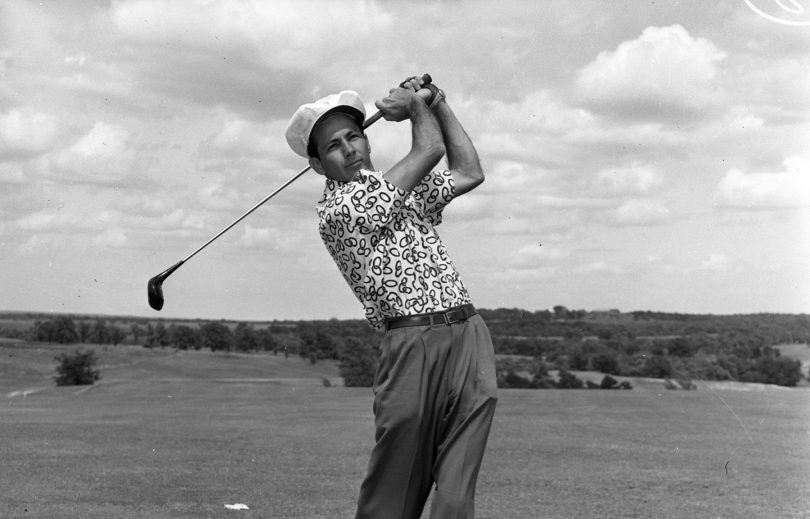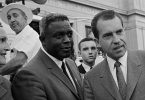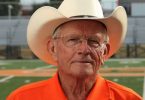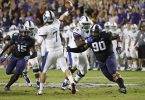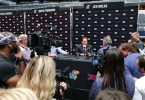Disgraced former Dallas City Councilman Dwaine Caraway on Tuesday afternoon traded in the suit-and-tie attire that marked his occupation as a sometimes-faithful public servant for clothing worked up by a prison tailor.
His destination: The Federal Correctional Institution of Big Spring, a low-security federal prison, where he will spend at least a portion of almost five years, the punishment handed down for accepting $450,000 in bribes and kickbacks, a crime he pleaded guilty to last summer.
We all wish him well in this period of penance and rehabilitation and hopeful he can move on with his dignity intact. Caraway is hardly the only guy whose brokenness manifested itself in one of the seven deadly sins — in this case, greed — and an adult timeout.
“He who is not contented with what he has, would not be contented with what he would like to have.”
Too little, too late, Socrates.
What it is that Caraway will see when he looks somewhere out the back of the facility is a curiosity.
In the back of the prison once sat an eight-hole golf course consisting of four holes, each with two sets of tee boxes.
It was built by T.A. Avarello and John Howell, who likely provided some financing.
It was the legacy that Avarello, who once wore a federal prison uniform for an illegal gambling operation he denied ever being part of, and another longer-term visitor, also from Fort Worth, left behind when they headed back east to freedom almost 40 years ago.
“I was proud of that course,” T.A. said a few years after being released in the 1980s after nine months of time away from society. “Then I practiced and kept my game tuned up. I just had bad luck, but it’s behind me. And, you know, I’ve played better golf the last couple of years since I’ve been back than I ever had in my life.”
Playing better golf was the priority. Always the priority.
It has been said by a few that T.A. was the only guy who went into prison a 5 handicap and a scratch golfer when he was released.
It’s probably also absolutely true.
We’ve heard of the stories of inmates smuggling smack into their cells. T.A. didn’t have that addiction.
T.A.’s was golf, something he had played on just about a daily basis since his childhood.
T.A. once said that he was ordered by authorities at the prison to build or rehabilitate the holes. Some have said the holes were part of an old course in disrepair. Others, at the time of his death at age 90 in 2013, said he asked prison officials if he could.
Those with the answer to those questions have passed on to the other side.
John Stinson Howell III was a war hero, a highly decorated pilot during WWII in the Army Air Force. Howell participated in bombing raids over France, Northern Italy, the Balkans, Poland and Germany. He was shot down over Austria and spent the better part of two months in Hungary and Romania as a guest of the Russian army.
By the time of V-E Day, Howell had been awarded the Distinguished Flying Cross, the Air Medal and the European Theater of Operations Ribbon. He was authorized to wear eight bronze battle stars.
He was also a highly accomplished businessman and engineer in Fort Worth.
He moved here in the late 1940s to work as a engineer at Convair, today Lockheed Martin. While there, he invented something called the Jetcal engine analyzer.
A new company he co-owned was formed — eventually becoming Howell Instruments — other temperature and speed indicators were developed and more government contracts flowed like water in the Mississippi.
Fortunes were made.
Those levels of resources, however, can come with complications.
One of those complications for Mr. Howell was tax evasion, a charge for which he served 15 months in Big Spring.
A notable benefactor to the state and national Republican Party, Howell received a full pardon for his offenses – completely clearing his name — as President George H.W. Bush walked out the doors of the White House in 1993.
Howell and T.A. couldn’t have been more different.
As Howell was busting his ass building a company, T.A. was playing golf. Lots of it every day. He was the “walking Easter egg,” the one dressed with flair, as one observed.
Avarello, a graduate of Laneri Catholic High School in Fort Worth, also was a member of the Army Air Forces during the war.
T.A. dabbled in some things over the years. Insurance was one. Oil leases through a “company” called Teebet was another.
But T.A.’s profession was as a golf hustler.
“T.A. never really wanted to devote a lot of time to anything except golf,” said his widow, Betty, a few years back.
“He figured he could make more money on the golf course than anywhere else.”
Mrs. Avarello, who passed away in 2017, and T.A. married in 1977.
A survey of local newspapers from the 1940s and ’50s through the 1970s include the details of Avarello’s legendary amateur career, which he spent on the road most weeks competing in events from here to the then “resort town” of Minerals Wells to Bowie to Stephenville all the way to the border of El Paso, teeing it up with the likes of Don Cherry, Don January, Tommy Bolt and Earl Stewart Jr.
He was a contender most every week by combining two precious ingredients: a short game and a gold putter.
He had been gifted, he once said, with a feel for putting. And it had gotten better with age.
T.A. admitted once that he probably had played a lot of golf when “I should have been working.”
Not necessarily when you’re what they call a good money player. And the more money T.A. played for the more the game held his attention.
His mantra: “Everybody has his choking price.”
Even Lee Trevino’s manager, Arnold Salinas, took notice.
“Nobody will beat this man much, including Trevino,” Salinas said. “Give him the white tees and he can beat anybody.”
Meadowbrook, on the east side of Fort Worth, was the course of Avarello’s youth.
Avarello returned there often for the daily money game at noon involving as many as 12 back in the 1960s, said one player who as a high school student at Eastern Hills High School met the “Texas Legend.”
“He liked to gamble and play golf,” said Chris Townes, who continued to play with Avarello for years after that. “And he was very good at it.”
Some 20 years after that first encounter, Avarello called with a standard proposal. A game at Shady Valley with an Avarello-esque unique set of circumstances.
Townes and his partner would play from the back tees, or tips. Avarello and his partner, with age having become a disadvantage in terms of length off the tees, would hit from the front tees.
Coincidence and proximity to his office caused Townes to drive by the course as he was making his way to work the morning of the match. As he did, he noticed Avarello’s car in the parking lot.
The tee time was hours away.
“I got in a cart and went looking for him,” Townes said, laughing. “He was going to each hole and moving the back tees back and the forward tees forward.”
Gamesmanship is part of the match, and T.A. had more angles than a Rubik’s Cube.
Who knows how much money T.A. raked in over of the years, but it was significant. He had games most every day of the week.
“I told him, ‘You got to keep records because we have to pay tax on this money … which we did,” Betty recalled. “I insisted on that.”
It wasn’t hiding money that got T.A. in trouble.
It was gambling. The Feds said it was bookmaking.
In United States vs. Thomas Anthony Avarello, et al., FBI wiretaps conducted during a period in 1975 indicated, federal prosecutors argued, that Avarello was part of a bookmaking scheme with admitted bookie Jerry Henry Wood of Dallas, Virginia Avanell Smith — Wood’s bartender — Bobby Joe Chapman and James Eugene Avery, both bookies, in Amarillo and Dallas, and Carmel Cosmo Bowers.
Prosecutors said evidence “tended” to show that Wood used Avarello and Bowers “to disseminate gambling information to bettors and to relay bets to him.”
All were convicted.
Avarello was sentenced to 18 months in Big Spring. He served nine months.
“The government had five guys for conspiracy,” T.A. said later. “The only one I knew was a bookie I had made football bets with.
“Everybody bets on football.”
So, T.A. had some time to work on his short game and still feed his preoccupations, golf and gambling on golf.’
In Club Fed, it was Coke … the legal kind.
Howell and T.A. bet on their golf games with Coca-Cola as the currency.
When T.A. left Big Spring, he was a scratch golfer and owner of a bunch of cases of soda.

